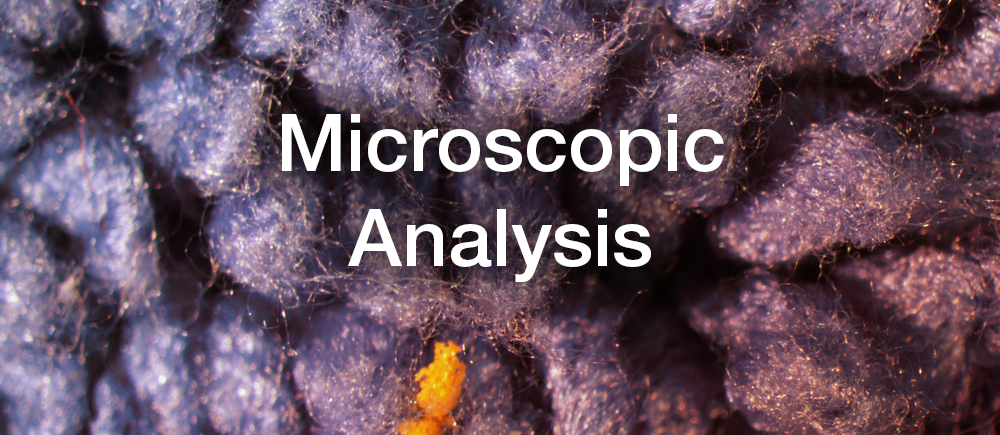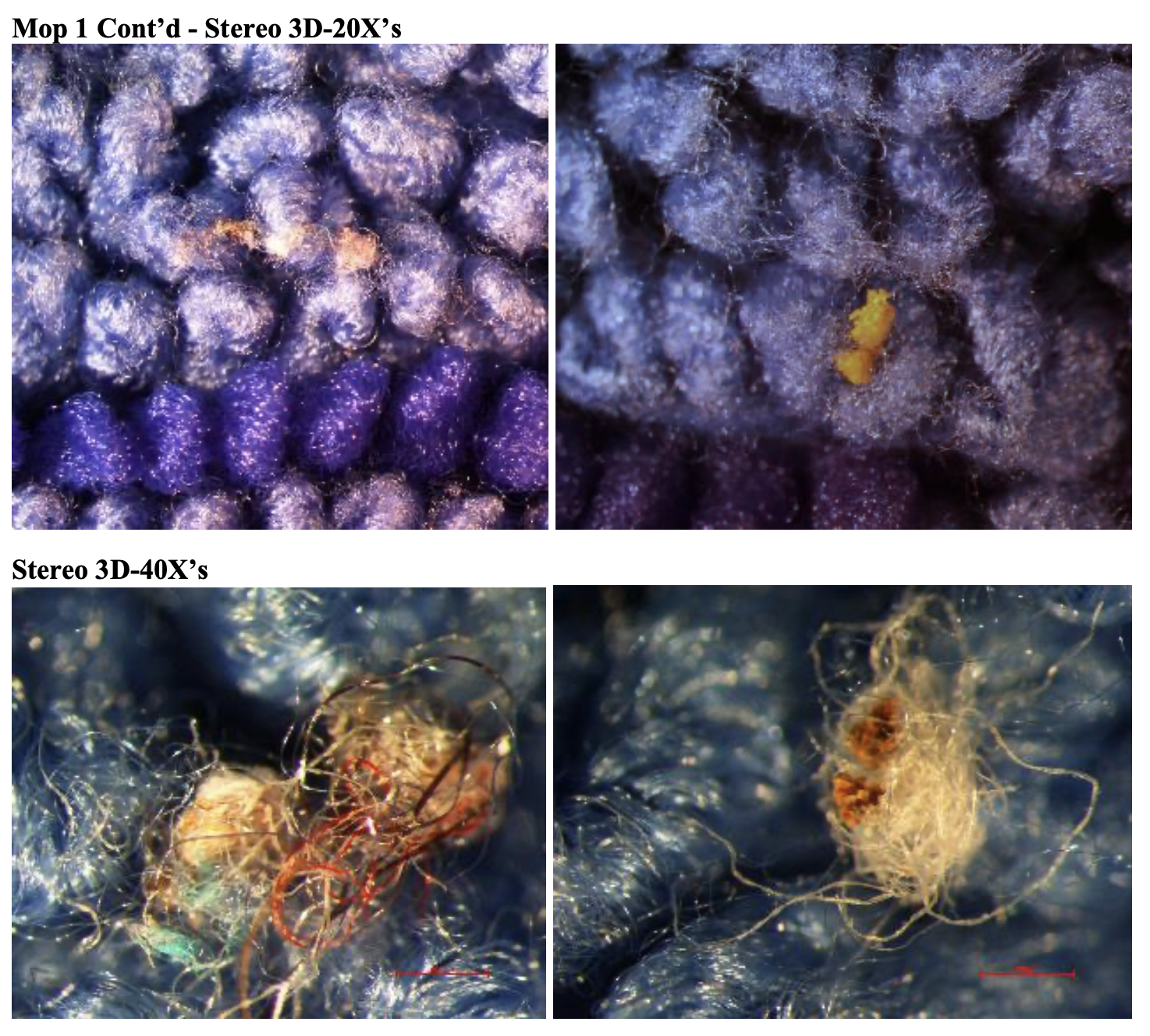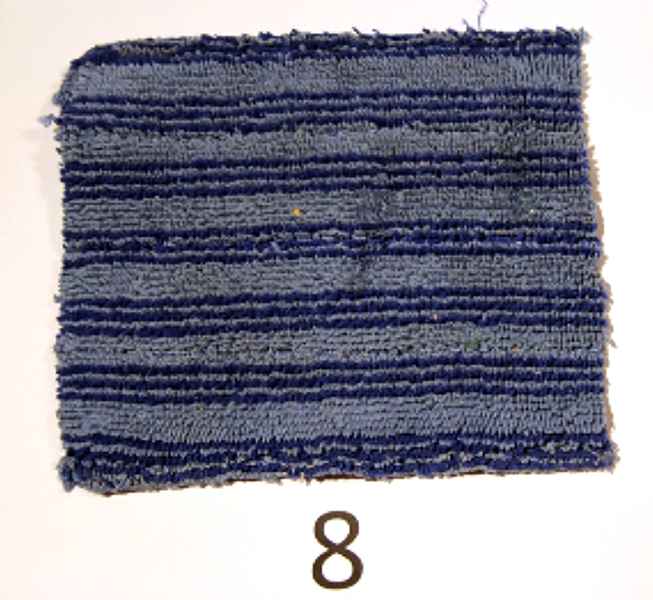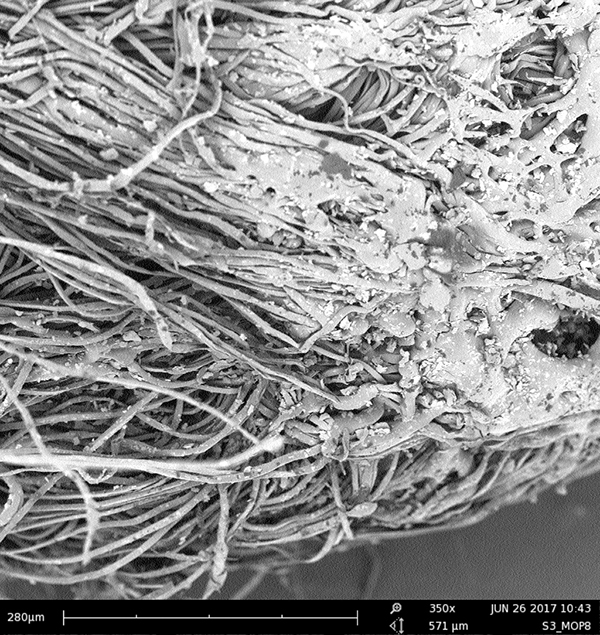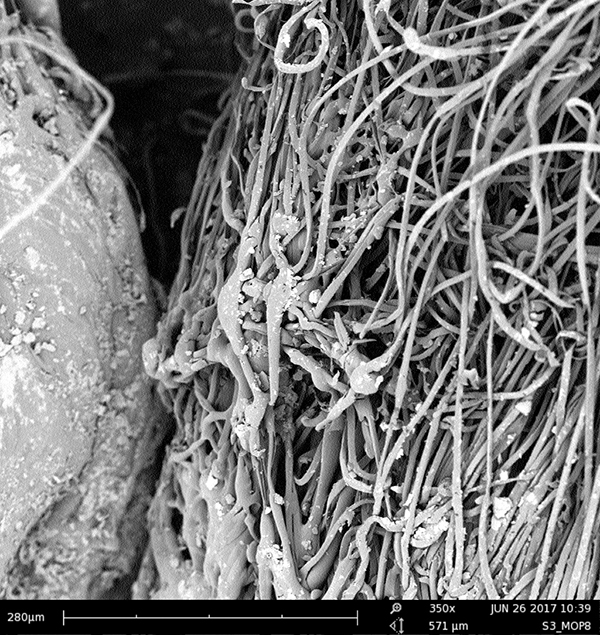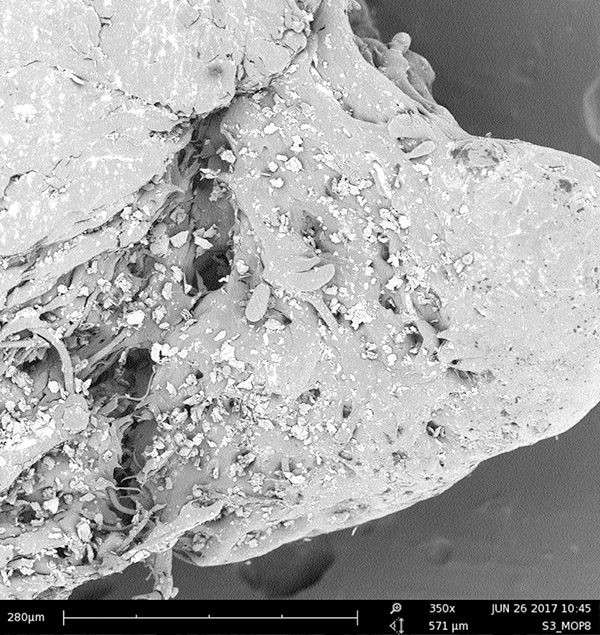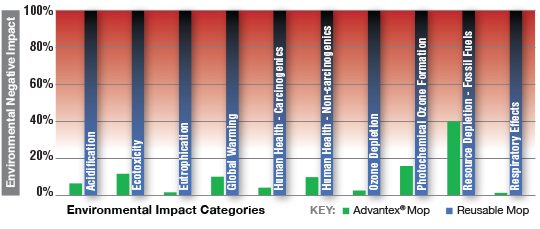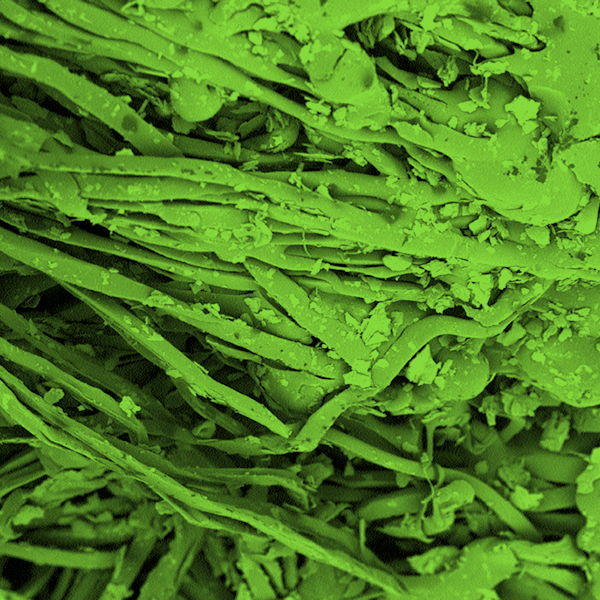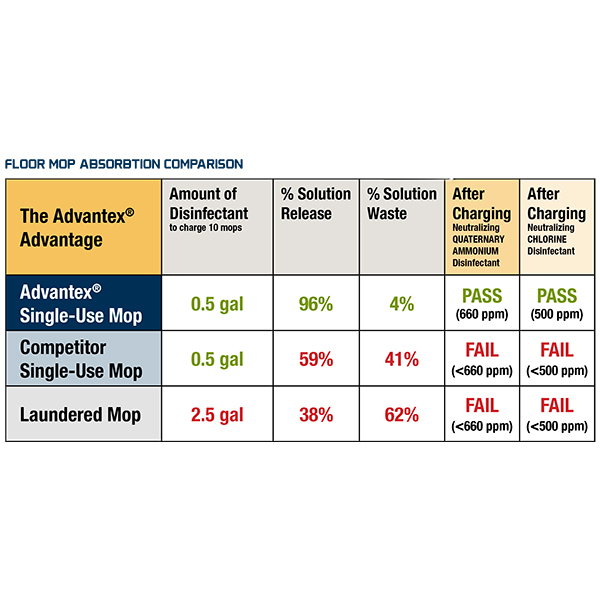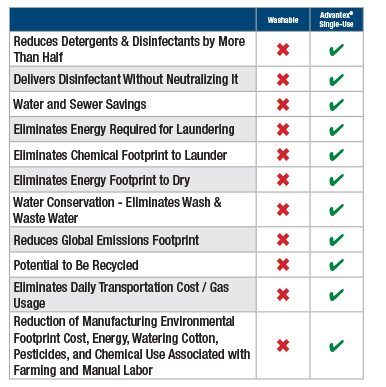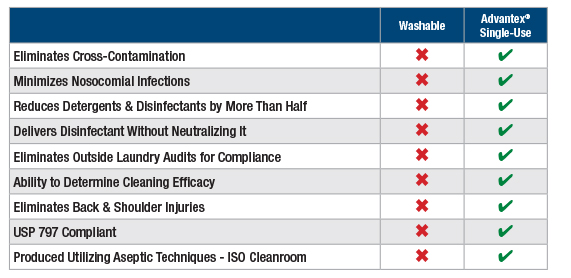Geerpres® is excited to welcome Patrick O’Brien to our team as Inside Sales & Customer Service Manager. Patrick brings a diverse background with a strong focus on building and maintaining lasting business relationships. His previous experience includes the...
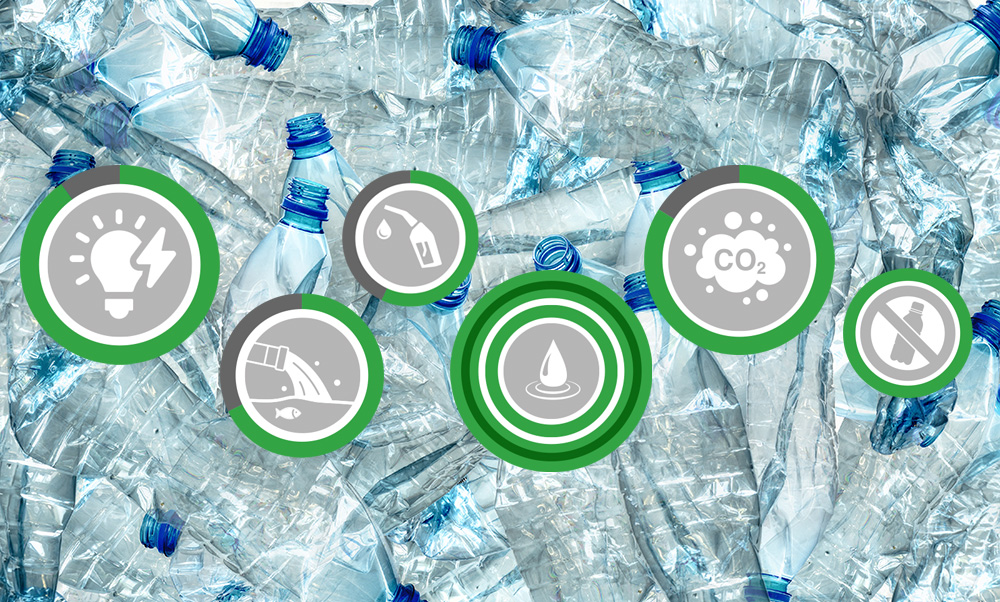
Sustainability MATTERS
Only Advantex® Single-Use Microfiber Mops help support your sustainability initiatives.
The Advantex® Single-use Mop has a significantly lower environmental impact than a reusable laundered mop in every category assessed in the EPA TRACI model. A contribution analysis on the global warming potential of the two indicates that the electrical power and chemistry needed to wash and dry the reusable mop dominates environmental adverse implications.
![]()
Reduce your Environmental footprint with Advantex® Mops
Advantex® Mops help support your sustainability initiatives.
ADDITIONAL RESEARCH:
Knowledge is Power
New Inside Sales & Customer Service Manager
Stop Leaks. Stop the Mess.
Absorbs Fast – Soaks up water-based spills in minutes. Stays Clean & Dry – No drips, no mess when removing from the receptacle. COMING SOON Easy to Remove – Built-in handle means no direct contact with waste. The Challenge Solved Leaking trash liners are a...
High-touch Surfaces Illustrated
Smarter Cleaning: Identifying and Managing High-Touch SurfacesBefore cleaning, it is essential to identify high-touch surfaces, as these may vary by room and facility. To support this process, Geerpres® has developed illustrations that guide room assessments,...
%
The only single-use mop Constructed of 71% post-consumer recycled materials!
repurposed plastic bottles are used to manufacture a case of Advantex flat mops
90% Less Electricity
Repeat washing and drying process

68% Less Chemical Use
Eliminates laundry chemicals and reduces chemicals used for daily cleaning
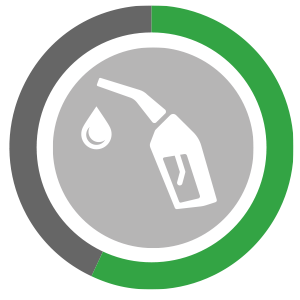
57% Less Resources (Fuel)
Resources used and fuel
consumption when transporting

253 Less Gallons of Water
Natural resource consumption
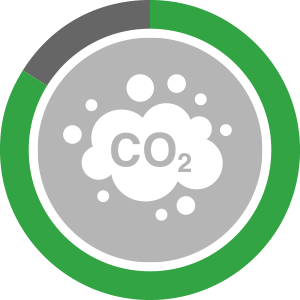
84% Less Ozone Depletion
Air pollution produced when transporting during laundering process (20x)
100% Less Microplastics
Plastic particles in the environment and water
Environmental Life-Cycle Analysis of Single-Use and Reusable Mops
ADDITIONAL RESEARCH:
Knowledge is Power
Sustainability MATTERS
Only Advantex® Single-Use Microfiber Mops help support your sustainability initiatives. The Advantex® Single-use Mop has a significantly lower environmental impact than a reusable laundered mop in every category assessed in the EPA TRACI model. A contribution analysis...
Analysis: Microfiber Laundered and a Single-Use Mops
Eight laundered microfiber flat mops and one single-use microfiber flat mop were photographed at 20X’s, 40X’s using a 3D stereo microscope and 1,000X’s using a Scanning Electronic Microscope, SEM.EXECUTIVE OVERVIEW: The laundered mops demonstrated significant...
Environmental Life-Cycle Analysis of Single-Use and Reusable Mops
Richard Venditti, Elis and Signe Olsson Professor, Department of Forest Biomaterials, North Carolina State University, Room 1204 Pulp and Paper Labs, Raleigh, NC 27695-8005 Download PDF Summary & Results The Advantex® Single-use Mop has a significantly lower...
The Floor Could be the Weakest Link in Fighting HAIs
Pathogens are consistently introduced to the floor throughout the day by shoes, transport equipment such as wheelchairs and beds, treatment devices or computer carts, and non-slip patient socks that traverse the floors and frequently, directly into a bed. More...
Moving to Single-use Mops
Converting to disposable microfiber mops can significantly reduce the HAI risk for hospitals, eliminating the potential for inadequately launder mops to be reintroduced with remnant HAI pathogens. The case study evaluated our Advantex® (Brand A) along with several...
Laundered Mops vs. Single-Use Mops
Environmental Comparisons A recent study evaluated laundered microfiber mops from eleven hospitals and found that 27.3% of the newly laundered mops contained microbial contamination, including HAI pathogens. Download PDF Key Findings Laundry considerations: The...

